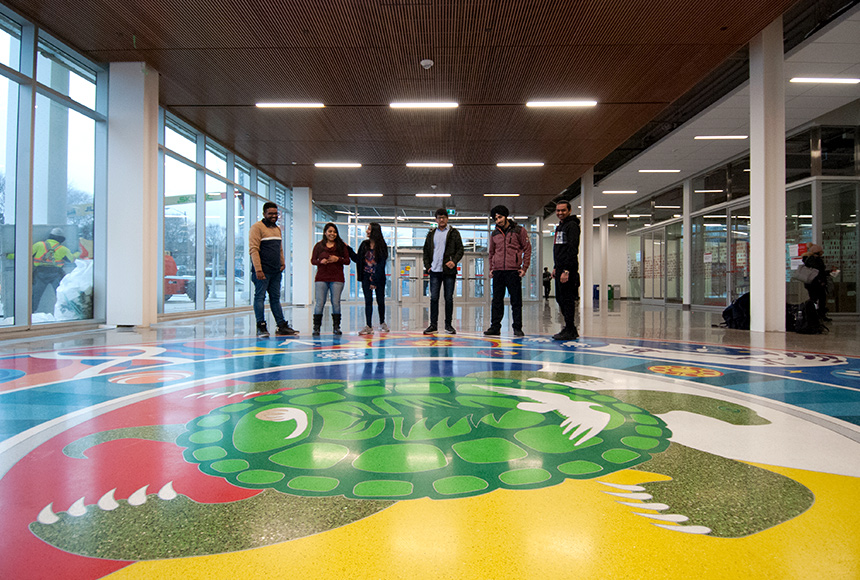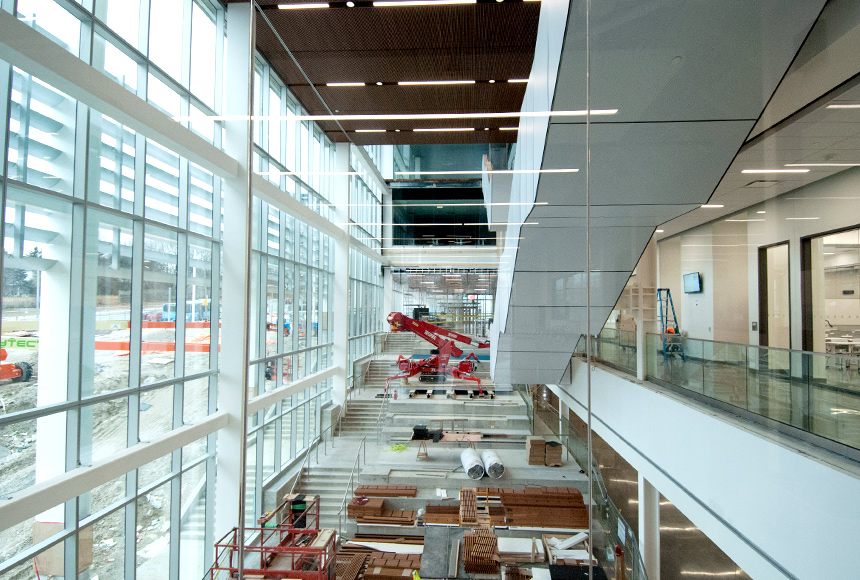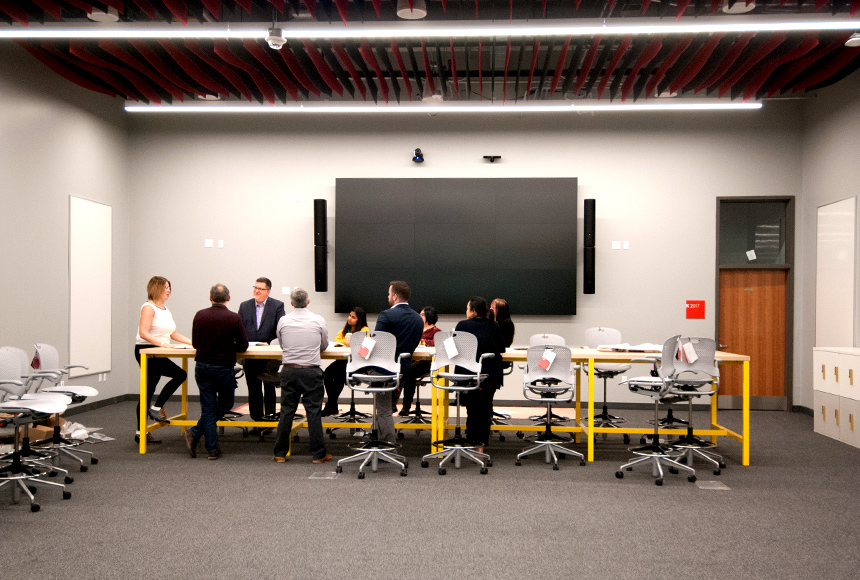“What this building means is that we now have an externally facing and dynamic environment for our partners to come. It’s open for business and we anticipate our partners to spend more time with us. People will want to be here.”
Jan. 10, 2019

“What this building means is that we now have an externally facing and dynamic environment for our partners to come. It’s open for business and we anticipate our partners to spend more time with us. People will want to be here.”
Jan. 10, 2019
Seneca’s Centre for Innovation, Technology and Entrepreneurship (CITE) opened its doors at Newnham Campus on Monday. Classes are taking place inside. Students and employees alike are wandering through the halls, checking out the cutting-edge facility designed to bring applied research, specialized training and entrepreneurial activities under one roof.
Checking out, also, the turtle.
Designed by Joseph Sagaj, an Indigenous artist, a terrazzo medallion inset in the floor of CITE has been attracting the attention of those who visited the new building this week.

From left: Second-year Electronics Engineering Technician students Meet Patel, Ami Patel, Vedanshi Patel, Jay Patel, Jasanpreet Singh Sidhu and Zala Dhaval check out the terrazzo medallion created by Indigenous artist Joseph Sagaj.
The medallion measures 10 meters in diameter and features a turtle in the centre, representing Turtle Island. The turtle is enclosed by elements of the First Nations people of the Great Lakes region, the Métis and the Inuit of the Artic.
“This design represents a ‘glimpse’ of their culture, spirituality, ceremonies, origins, teachings, history, symbols, stories, art, clans, system of governance, the sky world and world view,” Sagaj said. “These stories and teachings were shared through protocol, with elders and the people from these communities presented here. All these symbols and ‘ways’ continue to reflect and thrive in the people and in the land today.”
The medallion is just one of several design elements throughout CITE that pay tribute to Canada’s Indigenous history.
Since construction began in 2016, the $85-million project that’s financially supported by the federal and provincial governments has come a long way. Despite delay in 2017 due to rain, the five-storey building received substantial completion and occupancy from the City of Toronto in December.
“These are major milestones for us,” said Angelo Miranda, Director, Major Capital Projects. “It’s a fast-paced project. The weather put us behind the eight ball in 2017, but we are back on schedule and on budget. It’s more finished inside than it looks on the outside. The building is airtight and water-tight.”

CITE opened this week, with academic activities taking place on levels 2 and 3.
CITE, a.k.a. Building K, is accessible via external entrances and an internal bridge that connects it to Building D. While the top two levels of CITE won’t be completed until 2020, when administrative departments at Markham Campus will move to Newnham, Level 3 features eight general classrooms, three technology-enhanced classrooms and various student space and collaboration rooms.
Level 2 is anchored by the Mechatronics Lab and the Motors and Process Control Lab on the one end and by Applied Research, Innovation and Entrepreneurship (ARIE) on the other.
The new home of ARIE, the Innovation Centre, includes HELIX and the Data Analytics Research Centre (DARC) on Level 2 and an applied research garage with collaboration and maker space on Level 1.
Construction to be completed on Level 1 includes a Starbucks and labs for Information & Communications Technology programs.

Vanessa Williamson, Dean, Applied Research, Innovation & Entrepreneurship, holds a team meeting in the new Innovation Centre on Level 2.
DARC, to be fully open by September, is Seneca’s new research centre focused on helping industry partners utilize data to enhance business productivity. It’s a cross-disciplinary initiative that will involve all academic areas at Seneca, including the Faculty of Applied Science & Engineering Technology, Seneca Business and the Faculty of Communications, Art & Design.
“What CITE clearly demonstrates is Seneca’s commitment to innovation, technology and entrepreneurship, and that it values the benefits to its students, faculty and partners,” said Vanessa Williamson, Dean of ARIE.
While the new space at CITE creates more opportunities for ARIE to work more closely with colleagues across the board, Williamson said research activities with ties to academic areas will continue to exist at their main faculty.
“What this building means is that we now have an externally facing and dynamic environment for our partners to come,” she said. “It’s open for business and we anticipate our partners to spend more time with us. People will want to be here.”